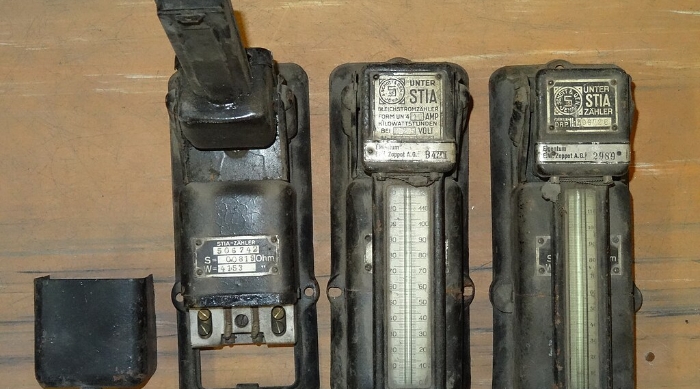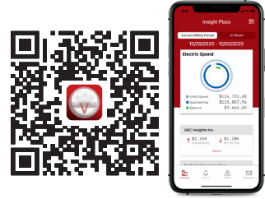What Property Managers Need to Know About CTs & Tenant Billing
CTs tell the meters what to record. So if the CT's off, your billing is too.
Current transformers (or CTs) are part of any digital submetering system, so a problem with a CT can affect your utility measurements and therefore your billing numbers and bottom line.
If your meter readings seem suspect but the meter itself seems fine, the CT should be next on your troubleshooting journey.
What Is a Current Transformer and How Does It Fit into Submetering?
A current transformer (CT) is a nifty gadget that serves many purposes. Not all uses of CTs apply to submetering, and we won’t go into non-submetering uses here. We like to stay in our own lane. (We’re also going to skip over the science of how this all works because that’s a textbook in itself and not what anybody is looking for in a weekly newsletter.)
Instead, let’s stick to what CTs do and therefore how they impact billing. In submetering systems, a CT functions simultaneously as:
- A transformer (it steps down current)
- An ammeter (it measures current)
- A sensor (it picks up and sends information to another device)
To look at, a CT is like a metal donut. If you pass an electric cable through the hole in the “donut,” the CT can sense the amount of current flowing through the cable, which it then sends to the meter for recording, and then the meter sends that information to a data collector, which then sends it to the cloud, where our system grabs it and puts it into our system to identify anomalies and determine billing amounts. And that’s submetering!
So the CT plays important roles in sensing and sending information about current draw. The other important task of a CT is our first bullet – being a transformer. Truly, CTs are more than meets the eye.
(That one’s for you, children of the ‘80s!)
Why is the transformer part important? Because in addition to its other functions, a CT can convert a large amount of current to a smaller amount. In submetering, this stepdown is key to preventing a high current from blowing out the meter's sensitive electronics.
CT Basics
Okay, now that we’ve discussed what a CT does in the process of measuring and recording electricity, let’s spend a little time talking about the basics of the CT devices themselves and what goes into selecting the right CT for any project.
In submetering, there are three styles (usually referred to as “types”) of CTs: solid core, split core, and rope (aka “coil CT”). Which type of CT is right for which application is hard to say. It’s a bit like asking for a screw at the hardware store. The staff needs to know what you're working on and with before they can recommend which screw will suit your need.
In addition to types, CTs also come in different sizes. The size refers to the opening of the donut hole, which needs to be big enough to fit properly around the cable you want to measure. Also, the CT usually has to fit in (or very close to) the electrical cabinet, so size comes into play there, too.
The final factor in CT selection is its rating, or capacity. A CT’s rating tells you the maximum amount of electrical current the CT was designed to accurately measure. The closer the rating to the load on that wire, the more accurate the reading will be. If the CT rating is too high (i.e., it’s oversized for the load), the CT will work but your readings won’t be as accurate, especially when usage is low. Also, the mismatch can cause the CT to overheat and become damaged, leading to even worse data.

How to Spot CT Problems
Okay, we’ve covered how a CT is involved in the actual process of submetering and we’ve covered some of the basics of the devices themselves. Clearly, CT selection and installation/maintenance isn’t the job of the property manager or owner. But billing is. Here are three signs in your meter data of potential CT problems that will impact your ability to recover tenant costs:
- Zero readings or extremely low readings
- Sudden drops or spikes in usage
- Negative readings
Any of these types of readings will, of course, affect the accuracy of your billing, so the sooner the problem is resolved, the better. If you see any of these situations in your data, call a meter technician and an electrician to troubleshoot the cause and its specific solution. (You could just call an electrician, but we recommend including a meter technician to make sure that both the electrical issue is resolved AND the measuring of electrical consumption has either not been impacted or has also been resolved along with the electrical issue.
What Does a Negative Meter Reading Mean?
As we said earlier, a poor match between the CT's capacity and the line's load affects the accuracy of the measurement, which is why you want a meter technician to help you troubleshoot a spiky or unusually low reading. But now let’s spend a little time on that last bullet in the list above – negative readings – because they happen more often than you might think. They also have the biggest potential impact on your utility cost recovery.
A negative meter reading indicates to the meter that electricity is flowing toward the utility provider rather than toward the tenant. And this is possible – if the building has solar panels or large uninterruptible power supply (UPS) units, then it could be providing electricity to the utility rather than taking from it.
But without those special use cases, your meters should never read negative. And if they are and your system doesn’t know how to handle that, it will subtract those negatively labeled values from your total rather than adding them. Then, when the bills go out, the tenant will pay for less than they consumed, and you'll be making up the difference.
How Do CTs Get Installed Backward?
We regularly see CTs that have been installed backward in buildings with no onsite generation, due more to confusion than inattention or inexperience. As we said at the beginning, CTs are used in many types of applications other than submetering; and in some of those applications, it doesn’t matter whether the CT is backward. So orientation is not something electricians necessarily think about when they arrive on-site.
In other words, it's not necessarily the electrician's fault the device was installed incorrectly.
COMMON CAUSES OF REVERSED CTs
1. Unclear orientation markers
Orientation markers vary by manufacturer, and some are less obvious than others.
2. Convention + human nature
CTs are often installed with their labels toward the circuit breaker. The electrician is trying to do you a solid here by making the CT’s label available for inspection without having to remove the CT (and therefore call out the electrician again just so the inspector can read the label). Unfortunately, the label isn’t necessarily placed on the CT with orientation in mind.
3. Unclear or nonexistent instructions
Again, orientation doesn’t matter for every CT use case, and the electrician doesn't necessarily “just know” what the orientation should be. Wiring documentation should always indicate how the CTs should be oriented and connected.
The Significance of Clear Communication – Human AND Electronic
Meters get all the glory in submetering (as much glory as submetering ever sees, anyway). But we consider CTs to be unsung heroes when it comes to accurate billing. If you understand how CTs contribute to the process and you make sure electricians have clear installation instructions, you can prevent a lot of billing errors and maybe even more manager headaches.
Key Takeaways
- CTs should match the size of the electrical load they’ll measure.
- Wonky readings can indicate a problem with the CT rather than the meter (or the tenant).
- Signs of CT problems include flat usage, sudden spikes, or negative readings.
- Negative readings = backward CT (unless you have solar panels or other onsite generation).
- If you suspect a problem with a CT, call a licensed electrician. Don’t put yourself or your equipment at risk.
You Might Like
About utiliVisor
Your tenant submetering and energy plant optimization services are an essential part of your operation. You deserve personalized energy insights from a team that knows buildings from the inside out, applies IoT technology and is energized by providing you with accurate data and energy optimization insights. When you need experience, expertise, and service, you need utiliVisor on your side, delivering consistent energy and cost-saving strategies to you. What more can our 45+ years of experience and historical data do for you? Call utiliVisor at 212-260-4800 or visit utilivisor.com



